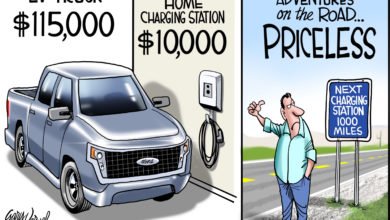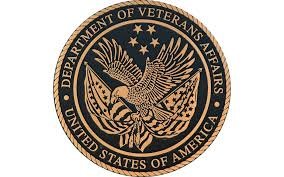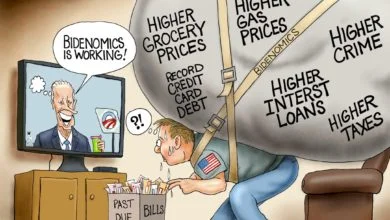Credit Card Debt Indicative of Inflation Psychology
Inflation psychology leads to embedded inflation and a wage-price spiral.
When the Federal Reserve paused its interest rate increases last September, I worried that it stopped raising rates too soon. I reasoned that interest rates were not high enough to curb excess consumer spending. That excess spending would allow inflation to linger and would lead to consumers feeling the inflation psychology.
The Biden administration says that the high inflation we have experienced since early 2021 was due to supply chain restrictions and increases in the price of energy. While that explanation seems to make sense, it really doesn’t accurately reflect the causes of the inflation.
4% Core Inflation
Energy prices have fallen dramatically, and that helped to bring inflation down. But the core inflation rate, which holds food and energy prices constant, remains at 4%.
__________
Once the consumer is gripped by the inflation psychology, they quickly pay the higher price, reasoning that they better buy it before the price gets even higher.
__________
Although the U.S. economy almost completely shut down in March and April of 2020 due to COVID, by July 2021 the total U.S. output equaled the level seen just prior to the shutdown. So, in total, there was not a shortage of supply.
Admittedly, some markets did experience supply disruptions that led to shortages, which drove up prices. Computer chips, for instance, had shortages well after the rest of the economy caught up. That kept chip prices high. But in the aggregate, supply reductions were not the primary cause of inflation.
The inflation was caused by excess demand in the economy. We had excess demand because the federal government had huge budget deficits. In addition, the Federal Reverse followed a shockingly irresponsible monetary policy in 2021 and the first half of 2022, which resulted in interest rates staying at a near zero level.
The low interest rates encouraged consumers to borrow and spend.
Inflation’s 9.1% Peak
In mid-2022, the Fed began to aggressively raise interest rates. By then, annual inflation reached 9.1%. The Fed continued raising interest rates until September 2023 when it decided to pause the rate hikes, noting annual inflation falling to under 4%.
By year-end 2023 the annual consumer price index (CPI) was 3.4%.
Consumers continue to spend even if they don’t have the funds. They do that by making purchases using their credit cards. In July 2023, total consumer credit card debt reached $1 trillion for the first time. The Fed hoped that high credit card interest rates would curtail some consumer spending.
Unfortunately, it didn’t. Currently consumer credit card debt is nearly $1.3 trillion. This indicates consumers now have an inflation psychology. This is very dangerous and will lead to inflation remaining above the Fed’s target of 2% for some time.
Normally, when a rational consumer sees the price of a product increase substantially, they question whether paying the higher price makes sense. Maybe they don’t need the product after all. Maybe there are other products that are less expensive and will satisfy their needs. Maybe they should cut back on the amount they buy.
In other words, normally rational consumers question higher prices before buying the product.
However, once the consumer is gripped by the inflation psychology, they quickly pay the higher price, reasoning that they better buy it before the price gets even higher. If they don’t have the money, they simply use their credit card for the purchase, even if credit card interest rates are very high.
Had the Fed continued its rate hikes at least one or two more times, the resulting higher rates on credit cards would have curtailed some of the spending that contributed to the excess demand.
The other problem with high and lingering inflation that leads to the inflation psychology is that workers demand large wage increases. They reason that they need higher wages to keep up with inflation.
In December wage increases were .6%. If that keeps up for the entire year wage increases will exceed 7% on an annual basis. That contributes to both excess demand leading to demand pull inflation and to higher labor costs leading to cost push inflation.
At this point, the inflation psychology must be eliminated. That can only happen by raising interest rates even higher than they are today.
The federal government can help reduce inflation by reducing spending to minimize the deficit. The longer it takes to reduce inflation and end the inflation psychology, the longer inflation will linger.
Agree/Disagree with the author(s)? Let them know in the comments below and be heard by 10’s of thousands of CDN readers each day!




